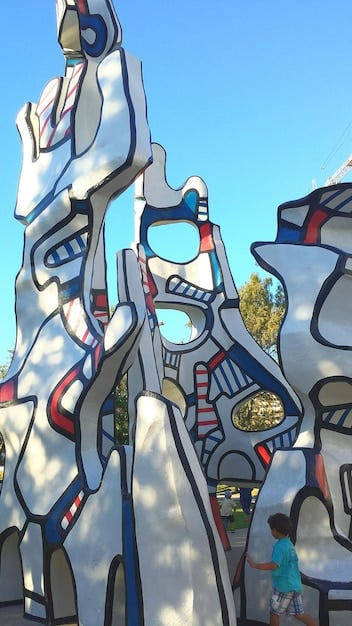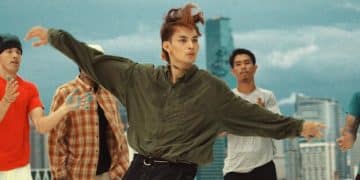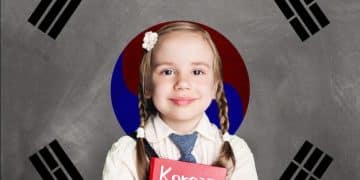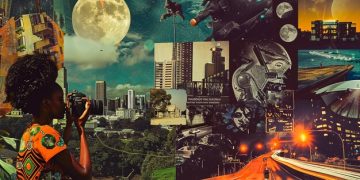K-Drama Crossover Dreams: US Actors Perfect for Korean Dramas

Exploring the imaginative fusion of Hollywood talent with captivating Korean drama narratives, this article delves into a speculative casting exercise, identifying notable US actors whose diverse skills and charismatic appeal would seamlessly integrate into the unique storytelling and production styles of K-dramas, offering a fresh perspective on cross-cultural entertainment.
The global phenomenon of K-dramas has captivated audiences worldwide, transcending cultural barriers with intricate plots, compelling characters, and stunning cinematography. As their popularity continues to soar, a fascinating “what if” scenario often emerges among fans and industry observers alike: K-Drama Crossover Dreams: Which US Actors Should Star in a Korean Drama? This exploration isn’t merely a whimsical fantasy; it’s a testament to the universal appeal of great storytelling and the potential for new creative synergies.
The Allure of Korean Dramas: A Global Phenomenon
Korean dramas, or K-dramas, have cemented their status as a dominant force in global entertainment. Their intricate narratives, often blending romance, thriller, fantasy, and historical elements, resonate deeply with diverse audiences. Beyond the captivating storylines, K-dramas are renowned for their high production values, meticulous character development, and a unique emotional depth that distinguishes them from Western productions.
What sets K-dramas apart, drawing in millions of viewers from every corner of the globe, is multifaceted. They often tackle complex social issues with sensitivity, explore human relationships with nuance, and showcase breathtaking cinematography that elevates the viewing experience. This commitment to quality, combined with an ability to innovate within various genres, has cultivated a fiercely loyal fanbase.
Narrative Sophistication and Production Excellence
K-dramas are celebrated for their sophisticated storytelling. Unlike many Western series that might prioritize fast-paced action or constant plot twists, K-dramas often allow narratives to unfold gradually, building tension and character arcs with patience and precision. This deliberate pacing allows for a richer exploration of themes and emotions, creating a more immersive experience for the viewer.
- Complex character development: Protagonists and antagonists are rarely one-dimensional, exhibiting growth and internal conflicts.
- Genre blending: Seamlessly merging elements like romance with legal dramas, or historical sagas with fantasy elements.
- Aesthetic appeal: High-quality cinematography, intricate costume design, and stunning locations are standard.
Cultural Nuances and Universal Themes
While steeped in Korean culture, K-dramas often explore universal themes such as love, loss, ambition, family dynamics, and the pursuit of justice. This blend of the specific and the universal allows viewers from vastly different backgrounds to connect with the stories on a personal level. The cultural nuances, in turn, offer an educational and enriching experience, exposing international audiences to new customs, traditions, and social dynamics. This cross-cultural bridge is a significant part of their appeal.
The appeal of these dramas isn’t just about entertainment; it’s about connection. Viewers find themselves immersed in worlds that, while sometimes fantastical or historically distant, paradoxically feel profoundly relatable. This connection is why the idea of a crossover, bringing familiar faces into these beloved narratives, sparks such enthusiasm and debate.
Evaluating US Actors for K-Drama Roles: Key Considerations
Selecting US actors for K-drama roles isn’t as simple as picking popular names. The successful integration of an American actor into a Korean drama would require careful consideration of several factors. Cultural adaptability, linguistic challenges, and acting styles would all play crucial roles in determining a seamless fit that enhances, rather than detracts from, the authentic K-drama experience. The goal is to identify actors who possess a certain gravitas, emotional range, and a willingness to embrace new artistic environments.
Cultural Adaptability and On-Screen Presence
One of the foremost considerations is an actor’s ability to adapt to the unique cultural context of K-dramas. This isn’t just about learning lines in Korean, but understanding subtle gestures, social hierarchies, and emotional expressions that differ from Western acting conventions. An actor’s presence must complement the often nuanced and understated performances typical of K-dramas, rather than overshadow them.
- Openness to diverse storytelling: Willingness to immerse in different narrative structures and pacing.
- Subtlety in performance: Ability to convey emotion without overt expressions, a hallmark of many K-drama performances.
- Respect for cultural context: Understanding and portraying characters within traditional and modern Korean societal norms.

Linguistic Challenges and Character Types
The language barrier presents a significant hurdle. While some K-dramas feature English-speaking characters, for a truly immersive experience, an American actor would ideally need to deliver lines in Korean, or at least perform opposite Korean-speaking actors in a way that feels natural. This isn’t impossible, but requires dedication.
Beyond language, considering the types of roles that American actors could inhabit is vital. Are they best suited for supporting roles as foreign consultants, or could they, with sufficient cultural immersion and linguistic preparation, take on leading roles that might have traditionally been played by Korean actors? This opens up interesting casting possibilities.
Ultimately, the success of such a crossover hinges on finding actors who are not only talented but also genuinely interested in stretching their craft beyond familiar boundaries. It’s about more than just a name; it’s about a legitimate artistic exchange that respects and celebrates both cultures.
Actors with Demonstrated Versatility: A Strong Foundation
The pool of US actors with the versatility to navigate diverse roles and genres is vast. However, the unique demands of a K-drama—ranging from nuanced emotional arcs to physical comedy and intense dramatic sequences—require a specific kind of adaptability. We’re looking for actors who not only can perform well but can also transform, shedding conventional acting habits to embrace the distinct rhythm and emotional landscape of Korean storytelling.
The Art of Subtlety and Depth
Many K-dramas rely on subtle expressions and restrained emotions to convey profound meaning. Actors who can master this delicate balance, delivering powerful performances without resorting to excessive theatrics, are ideal candidates. This requires a deep understanding of character psychology and the ability to convey internal turmoil or quiet joy through minimal cues. Their filmographies often reveal a willingness to take on complex roles that demand such introspection.
- Ability to portray internal conflict: Excelling in roles that demand nuanced emotional expression.
- Experience in character-driven narratives: Having a history of working on projects where character development is paramount.
- Command of diverse emotional palettes: Adept at expressing a wide range of feelings, from profound sadness to subtle humor.
Physicality and Range Across Genres
K-dramas frequently blend genres, transitioning seamlessly from heartfelt romance to thrilling action, and then into comedic relief. Actors who have demonstrated proficiency across multiple genres—perhaps with a background in independent film, theater, or diverse television roles—would be well-suited. Their physicality, whether for an action sequence or a gentle romantic gesture, should feel authentic and unforced within the K-drama context.
Their versatility isn’t just about being able to play different kinds of characters, but about seamlessly shifting between emotional registers and narrative styles. This chameleon-like ability makes them strong contenders for truly embodying K-drama roles, whether as a stoic lead or a quirky supporting character. The challenge lies in meshing their established skills with the distinct artistic fingerprint of Korean storytelling.
Potential Candidates and Ideal K-Drama Archetypes
Imagining specific US actors in K-drama settings opens up a fascinating discussion about how their unique talents might align with common K-drama archetypes. From the enigmatic chaebol (business conglomerate heir) to the determined prosecutor, the protective guardian, or the quirky outcast, K-dramas offer a rich tapestry of character roles. Identifying actors who could credibly embody these, while adding their own distinct flair, is key.
The Chaebol/Protagonist with a Hidden Past
This archetype demands an actor who can convey sophistication, power, and perhaps a touch of brooding vulnerability. They often carry emotional baggage or a traumatic past that influences their present actions. An actor capable of portraying both commanding presence and deep-seated pain would excel here.
Consider an actor like Adam Driver. His intense gaze, commanding presence, and remarkable ability to convey complex emotions with subtlety make him an intriguing choice for a powerful yet emotionally conflicted chaebol or a genius protagonist with a dark secret. His roles often blend vulnerability with strength, a common and captivating duality in K-drama leads. Another possibility is Oscar Isaac, known for his intense and layered performances, fitting the role of a mysterious or morally ambiguous figure.
The Witty Sidekick/Comic Relief
Every great drama needs its moments of levity, and K-dramas often feature exceptionally well-developed secondary characters who provide comic relief and emotional support. This role requires impeccable comedic timing, a warm presence, and the ability to enhance the main narrative without overshadowing it. Actors who are adept at physical comedy and quick-witted banter would be perfect.
Someone like Aubrey Plaza could bring her signature deadpan humor and quirky charm to a supporting role, perhaps as a cynical yet endearing coworker or a surprisingly insightful best friend. Her ability to deliver comedic lines with a straight face would fit perfectly within the often understated humor of K-dramas. Alternatively, Randall Park, with his relatable and often hilarious performances, could inhabit a role that balances humor with genuine warmth, a staple in many K-dramas.
The Stoic Protector/Action Hero
Many K-dramas incorporate thrilling action sequences or elements of suspense, requiring actors who can convincingly portray strength, resilience, and a quiet determination. This archetype might be a bodyguard, a detective, or a someone with a haunted past seeking redemption through action. The role demands physical capability combined with an ability to convey emotional depth, often through minimal dialogue.
An actor like Steven Yeun, already familiar with cross-cultural productions and known for his intense dramatic performances, could easily slip into the role of a stoic protector or a driven action lead. His nuanced acting style would bring depth to what might otherwise be a purely action-oriented character. Another strong contender is Mahershala Ali, whose calm demeanor and powerful delivery could portray a wise, protective figure or a formidable antagonist, bringing gravitas to any production.

The beauty of these potential pairings lies in the imaginative space they create. Each actor brings a unique set of skills and a distinctive presence that, when combined with the narrative richness of K-dramas, could yield truly memorable and groundbreaking performances, drawing in even more diverse audiences.
Challenges and Opportunities in Cross-Cultural Production
While the prospect of US actors starring in K-dramas is exciting, it’s essential to acknowledge the practical challenges inherent in cross-cultural productions. These include linguistic barriers, differences in production methodologies, and the intricate negotiation of artistic visions from distinct cinematographic traditions. However, these challenges also present considerable opportunities for innovation, cultural exchange, and the creation of truly unique entertainment experiences.
Navigating Language and Communication Barriers
The most immediate and apparent challenge is language. While many K-drama sets might have interpreters, relying on translation for nuanced emotional direction or spontaneous dialogue can impede the creative process. Actors would need significant linguistic training, or the scripts would need to be carefully crafted to accommodate their language proficiency, perhaps by creating characters who are, by plot design, non-Korean speakers.
- Intensive language coaching: Necessary for actors to deliver authentic performances in Korean.
- Creative scripting solutions: Adapting roles to minimize language demands or integrate English naturally.
- Cultural sensitivity training: Essential for the entire cast and crew to ensure harmonious collaboration.
Bridging Production Philosophies and Artistic Styles
Korean drama production often operates at a rapid pace, with live shooting schedules that allow for audience feedback to influence ongoing storylines—a stark contrast to the often months-long pre-production and fixed shooting schedules common in Hollywood. Adapting to these different workflows and artistic approaches would require flexibility from all parties involved. However, this flexibility can also lead to new and exciting creative synergies.
The opportunity lies in weaving together the best of both worlds. Imagine the meticulous planning and extensive resources of Hollywood production combined with the fast-paced adaptability and emotional depth characteristic of K-dramas. Such a fusion could lead to groundbreaking narratives that push the boundaries of global entertainment.
Ultimately, successful cross-cultural productions are about more than just overcoming challenges; they are about embracing differences, learning from distinct artistic traditions, and forging new paths for storytelling that captivate a truly global audience.
The Impact on Global Entertainment and Audience Engagement
The idea of US actors starring in K-dramas extends beyond mere celebrity novelty; it represents a significant step towards a more interconnected and culturally rich global entertainment landscape. Such crossovers could profoundly impact how stories are told, how talent is perceived, and how audiences worldwide engage with content. This confluence of creative forces has the potential to break down remaining cultural barriers in media consumption, fostering a greater appreciation for diverse storytelling traditions.
Expanding Reach and Diversifying Perspectives
Introducing familiar American faces into K-dramas would inevitably attract new segments of the audience who might not typically engage with foreign-language content. This broader viewership, drawn in by a recognizable actor, could then discover the richness and depth of Korean storytelling, potentially converting them into long-term fans. This acts as a powerful gateway, expanding the global footprint of K-dramas even further.
- New audience demographics: Attracting viewers who are primarily familiar with Hollywood productions.
- Increased cultural exchange: Encouraging deeper appreciation for Korean culture and entertainment.
- Narrative innovation: Inspiring new plot lines and character dynamics from mixed cultural backgrounds.
Fostering New Forms of Collaboration
Beyond individual celebrity appearances, these crossovers could pave the way for more substantive collaborations between Hollywood and the Korean entertainment industry. Joint ventures, co-productions, and the exchange of creative talent (writers, directors, technical crews) could become more common, leading to a new wave of hybrid content that draws on the strengths of both cinematic traditions. This could also inspire a reciprocal trend: Korean actors taking on more prominent roles in Hollywood productions.
The long-term impact could be transformative, creating a truly global entertainment ecosystem where stories transcend national boundaries and are shaped by a wider array of voices and perspectives. This is not merely about individual careers; it is about enriching the global narrative tapestry, making entertainment more vibrant, diverse, and universally resonant.
Beyond the Dream: Practicalities of Crossover Casting
While the concept of US actors in K-dramas ignites excitement, transforming these dreams into reality requires navigating a complex web of practical considerations. These extend beyond artistic preferences to encompass logistical, financial, and regulatory frameworks. Understanding these practicalities is crucial to assessing the feasibility of such ambitious crossover projects and ensuring their success.
Logistical and Financial Imperatives
Bringing a prominent US actor to a K-drama set involves significant logistical planning. This includes managing international travel, securing appropriate visas, arranging accommodations, and ensuring a comfortable working environment that aligns with both American union standards and Korean production practices. Furthermore, the financial implications can be substantial. Hollywood actors, especially those with established careers, command higher fees than typically seen in K-drama budgets. This financial disparity would necessitate innovative funding models, potentially involving international co-production agreements or significant investment from streaming platforms.
- Budget allocation: Securing funds to match actor fees and international production demands.
- Visa and work permit requirements: Navigating complex immigration laws for extended stays.
- Infrastructure adaptation: Ensuring production facilities meet Hollywood and Korean standards.
Agent Negotiations and Industry Standards
Securing talent involves meticulous negotiations with agents and managers, who represent the actors’ interests. These discussions would cover not only compensation but also creative control, screen time, billing, and promotional commitments. Integrating US industry standards, such as specific working hours or clauses regarding intellectual property, into the Korean production framework could be challenging but necessary. Developing a mutual understanding and respect for each industry’s norms is paramount for a smooth collaboration.
The practicalities are indeed challenging, but they are not insurmountable. As global entertainment markets continue to merge and demand for diverse content grows, the collaborative infrastructure to support such ambitious crossovers is also maturing. With foresight, strategic planning, and a genuine desire to bridge artistic traditions, the dream of seeing US actors in K-dramas can indeed become a compelling reality, enriching both industries and captivating audiences worldwide.
| Key Point | Brief Description |
|---|---|
| 🎭 Versatility | Actors who can seamlessly adapt their acting style to K-drama’s nuanced emotional range. |
| 🗣️ Language/Culture | Willingness to learn Korean and understand cultural subtleties, reducing communication barriers. |
| 💡 Innovation | Possibility of fresh narratives and character dynamics through cross-cultural casting. |
| 🌐 Global Impact | Attracting new audiences and fostering greater international entertainment collaboration. |
Frequently Asked Questions About K-Drama Crossovers
▼
K-dramas gain immense global popularity due to their compelling narratives, unique blend of genres, high production quality, and deep emotional resonance. They often explore universal themes with a fresh perspective, captivating diverse audiences with their intricate plots and well-developed characters, making them universally relatable and immensely enjoyable.
▼
US actors would face challenges including the language barrier, requiring significant Korean language training. Additionally, adapting to different cultural nuances in acting styles, such as subtle emotional expressions, and adjusting to the fast-paced K-drama production schedules would be key hurdles. These require flexibility and a strong commitment to cultural immersion.
▼
Ideal candidates are versatile actors capable of subtle dramatic performances and genre blending. Examples include Adam Driver for intense, complex leads, Aubrey Plaza for witty comedic relief, Steven Yeun for stoic action roles, and Mahershala Ali for commanding, wise characters. Their ability to adapt and convey depth makes them suitable for unique K-drama archetypes.
▼
Such crossovers would significantly expand K-drama audiences, attracting viewers new to foreign-language content. They would foster deeper cultural exchange, leading to innovative storytelling and potentially more co-productions between Hollywood and Korea. This could break down media barriers, enriching the global entertainment landscape with diverse narratives and talent, fostering greater collaboration.
▼
Yes, practical obstacles exist, including managing significant financial costs associated with high-profile US actors, navigating complex visa and work permit procedures, and aligning divergent production methods between Hollywood and Korean industries. Successful execution requires innovative funding, meticulous logistical planning, and strong cross-cultural communication to bridge industry standards.
Conclusion
The visionary concept of US actors collaborating in K-dramas transcends mere celebrity gossip; it represents a captivating frontier in global entertainment. By bridging diverse acting talents with the compelling narratives and meticulous production of Korean dramas, such crossovers hold immense potential. They offer not only a fresh dimension to character portrayal but also pave the way for unprecedented cultural exchange and narrative innovation. While logistical and cultural hurdles exist, the promise of new storytelling avenues and expanded global audiences makes these crossover dreams a compelling future for an increasingly interconnected world of media.





